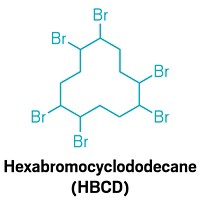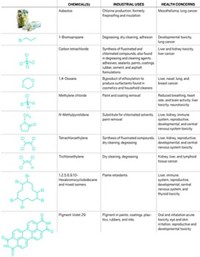Advertisement
Grab your lab coat. Let's get started
Welcome!
Welcome!
Create an account below to get 6 C&EN articles per month, receive newsletters and more - all free.
It seems this is your first time logging in online. Please enter the following information to continue.
As an ACS member you automatically get access to this site. All we need is few more details to create your reading experience.
Not you? Sign in with a different account.
Not you? Sign in with a different account.
ERROR 1
ERROR 1
ERROR 2
ERROR 2
ERROR 2
ERROR 2
ERROR 2
Password and Confirm password must match.
If you have an ACS member number, please enter it here so we can link this account to your membership. (optional)
ERROR 2
ACS values your privacy. By submitting your information, you are gaining access to C&EN and subscribing to our weekly newsletter. We use the information you provide to make your reading experience better, and we will never sell your data to third party members.
Policy
EPA flexes muscle under new TSCA
Agency picks first 10 chemicals, including asbestos, for safety evaluation
by Britt E. Erickson
November 30, 2016
| A version of this story appeared in
Volume 94, Issue 48
The first 10 chemicals EPA will evaluate under the revised TSCA:
• Asbestos
• Seven solvents:
o 1,4-Dioxane
o 1-Bromopropane
o Carbon tetrachloride
o Methylene chloride
o N-methylpyrrolidone
o Tetrachloroethylene, also known as perchloroethylene
o Trichloroethylene
• A cluster of cyclic aliphatic bromide flame retardants
• Pigment Violet 29
EPA is embracing its new authorities to review the safety of chemicals in the marketplace under the revised Toxic Substances Control Act (TSCA), which was enacted earlier this year. In one of its first moves to implement the new law, the agency announced on Nov. 29 the first 10 chemicals it will scrutinize for possible risks to human health and the environment.
The 10 chemicals were pulled from a list of about 90 substances that EPA had previously declared to be a high priority for safety evaluation because of their potential for high hazard and exposure. To the delight of many environmental and public health activists, asbestos—a known human carcinogen—was included in this first group of 10. Other chemicals that made the list are seven solvents, a group of cyclic aliphatic bromide flame retardants used in extruded and expanded polystyrene foams, and an organic pigment.
Asbestos is noteworthy because EPA was unsuccessful at banning the substance several decades ago under the outdated 1976 TSCA. Despite tens of thousands of pages of documentation linking the inhalation of asbestos fibers to cancer and other adverse health effects, a federal appeals court ruled in 1991 that EPA did not demonstrate what was legally required to justify regulation. The agency’s failed attempt to ban asbestos was one of the key driving forces behind the efforts to modernize TSCA over the last several years.
Chemical manufacturers and their major trade association, the American Chemistry Council, supported the overhaul of TSCA, but they are now cautiously waiting to see how EPA will implement the new law.
“It is important to note that a chemical’s inclusion in this first group of 10 chemicals does not in and of itself indicate anything about the safety of the chemical,” ACC said in a statement. “Its listing is simply an acknowledgment by the agency that it plans to conduct risk evaluations on these 10 chemicals before others.”
The new law directs EPA to complete its evaluation of the 10 chemicals within three years. If the agency finds an unacceptable risk for any of them, it must take steps to lessen that risk within two years of completing the evaluation.




Join the conversation
Contact the reporter
Submit a Letter to the Editor for publication
Engage with us on Twitter